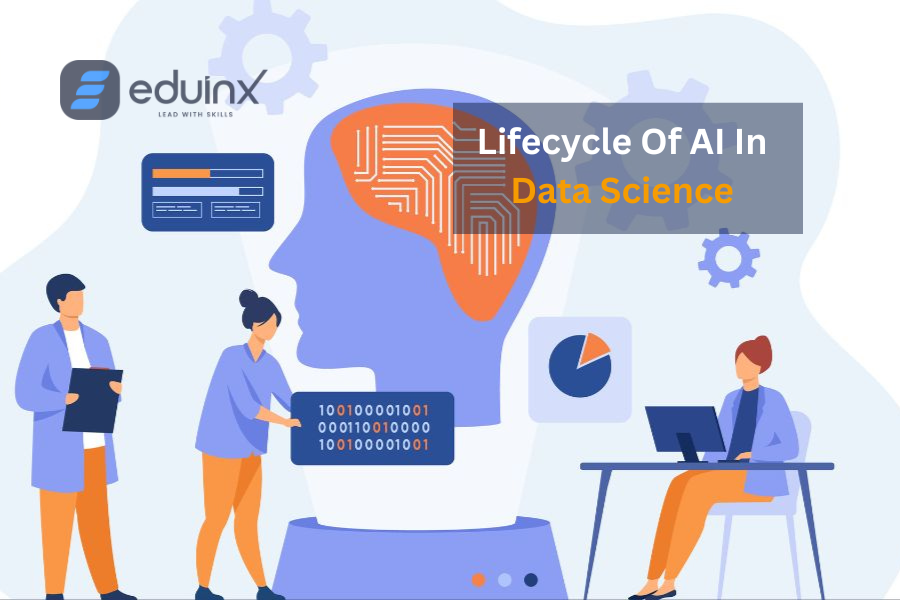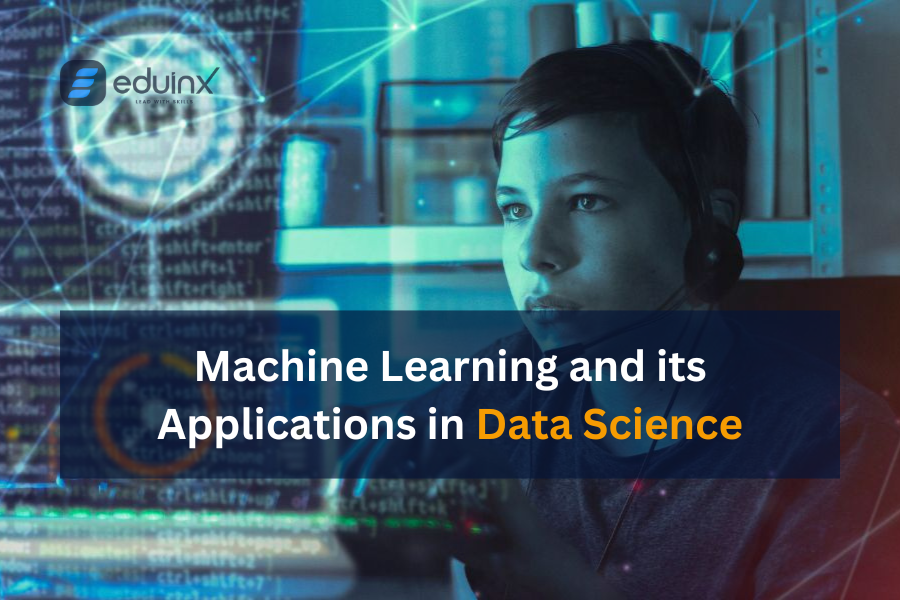Introduction
As a professional data science engineer or a fresh graduate aspiring to build your career, learning the lifecycle of data science and its real-time applications is sure to help you gain a strong foothold in the industry. Once you understand how data science works and some of its real-time applications, you can try and resolve most challenges faced by industries and become the most sought-after candidate for companies. Apart from this, if you are well-versed in Python, Big Data, and generative AI applications, you become an indispensable asset and your salary package is bound to grow substantially.
Learning the applications of data science and its lifecycle will help you understand how data science revolves around the use of machine learning and various analytical strategies. It empowers companies to arrive at different insights and predictions through analytical strategies that resolve business challenges.
This blog covers the following topics:
- ● Why is learning data science essential?
- ● Understanding business goals
- ● Data prep and exploratory analysis
- ● Data modeling and evaluation
- ● Model deployment
- ● Real-time applications
Why is Learning Data Science Essential?
During the early 2000s, data used to be much less and easily accessible in a highly structured format. They could be collated in Excel sheets and processed with business intelligence tools. However, this is not the case today as there are huge volumes of data that cannot be compiled in a simple Excel sheet. Organizations have started relying on complex algorithms and technologies where data science plays a pivotal role. Data science converts large uncategorized data into a structured format and provides significant insights that ensure easy decision-making. When companies require assistance in handling unique predictions, like surveys, studying competitors, etc., they depend on data science engineers for an appropriate solution.
Did you know that the use of information science algorithms is on the rise? This is because it helps OTT platforms and social media websites frame the right algorithm that provides the right customer experience. There is a huge rise in the number of data science-related jobs in the current market as almost all industries rely on data to make informed decisions for profitable outcomes. Did you know that 47% of roles in the current market require a data science degree? It is essential for you to stay equipped with the latest trends in data science to stay relevant in the current competitive market. Understand the lifecycle of data science to build a strong foundation and upgrade your skills by learning generative AI and Python.
Understanding Business Goals
The entire lifecycle of data science needs to be under a specific goal. If an organization does not have a proper business goal, data scientists will not have a problem to work on. A data science engineer needs to get in touch with the business analyst to understand the core goals and details of competitors before working on any project. They need to have a clear perception and an aim that remains in sync with the enterprise's objective. After gathering the required details, the next phase would be to ensure a proper business understanding.
Here a data science engineer gathers the reachable data and works on the enterprise problem. They begin by describing the data, structure, relevance, and records. They need to work with business analysts or a commercial enterprise group to understand the facts that have to be used to resolve the problem. After learning the nuances, the data science engineer describes the data, its structure, its relevance, and its record type.
Data Prep and Exploratory Analysis
In the preparation stage, data analysts choose the applicable data, integrate it by merging data sets, cleaning it, and treating the lacking values by either eliminating them or imputing them. They eliminate inaccurate data, test any outliers, construct new data, and derive new elements from present ones. The data is formatted into a decipherable structure and any unwanted columns and features are eliminated. Did you know that data preparation is the most time-consuming and essential part of the complete existence cycle? The key here is that the model will be as accurate as the data.
As an aspiring data scientist, you need to get a strong grip on your data and get concepts about the answer and elements that impact it. You need to use bar graphs to explore data distribution inside distinct variables of a character. Also, relations between distinct data points need to be collated with suitable data visualization techniques such as using heat maps or scatter plots. You can also combine every characteristic individually or by combining them with different features.
Data Modeling and Evaluation
The heart of data analysis is data modeling as a model takes the organized data as input and provides the preferred output. Did you know that this step consists of choosing a suitable model such as a classification problem, regression problem, or clustering problem? Now, as a data science engineer, you need to choose the algorithms that need to be enforced and tune the hyperparameters of each model to achieve optimum performance. You need to ensure that there is stability between the performance and generalizability. The model will be evaluated to check if it is deployed properly, it will also be examined on unseen data and evaluated cautiously with assessment metrics. The model needs to be re-iterated if it does not provide an accurate result.
Did you know that a data science model will evolve and enhance itself with new data to adapt to new evaluation metrics? This can help in constructing more than one model for a problem statement and arriving at different ways to construct an ideal model that addresses business concerns.
Model Deployment
Model deployment is the last stage of the data science lifecycle. After a rigorous assessment, the model is deployed in the preferred structure and channel with each step in the life cycle being clearly assessed. During deployment, data science engineers ensure that each step of the life cycle has been properly done by performing an in-depth quality check. If data is not accumulated properly, there is a likelihood of records getting lost and the model will fail to work. Therefore, each step of the data science lifecycle needs to be given appropriate attention, time, and effort.
Real-time Applications
The lifecycle of data science can be implemented in banks for fraud detection and monitoring financial transactions to mitigate risks. It can perform live customer sentiment analysis, personalize the website based on user behavior, optimize traffic in smart cities, and detect anomalies in industrial processes. It is widely used in predicting the stock market and provides model updates for immediate insights and actions based on the latest data streams. With the recent boom in demand for data science professionals with AI knowledge, it is essential for you to learn data science with generative AI to stay relevant in the market and cope with the competition. Learn the lifecycle of data science to lay a strong foundation to understand machine learning in data science.
Eduinx provides the right platform for you to learn data science with generative AI through a virtual classroom-based environment. It helps professionals and freshers to understand concepts clearly and implement their understanding by performing real-time capstone projects. Eduinx has a team of highly-skilled industry experts with over 10 years of industry-relevant experience. They also help in placement with 360 degree career support.
Reference links:
https://www.geeksforgeeks.org/data-science-lifecycle/ https://www.datascience-pm.com/ai-lifecycle/




